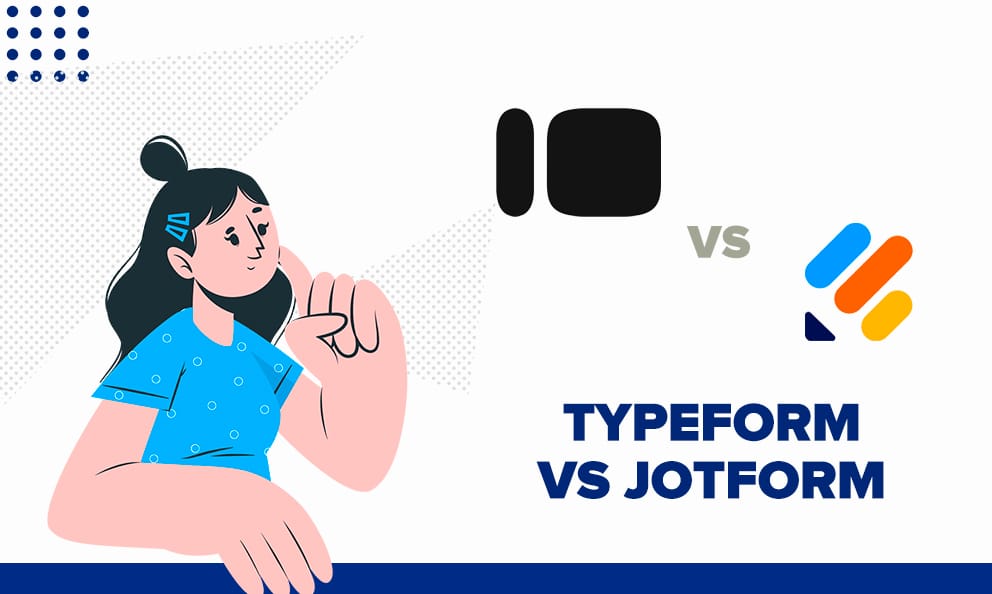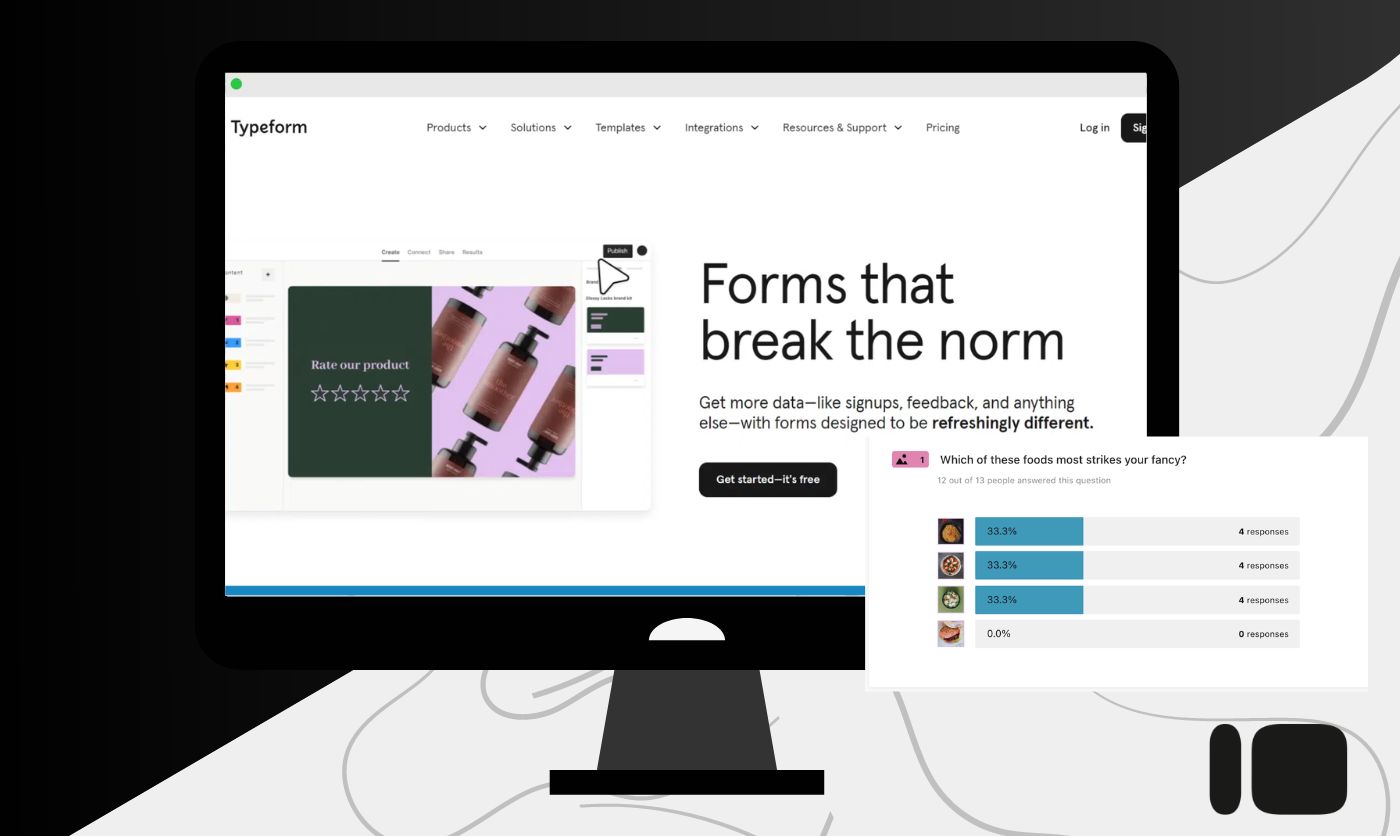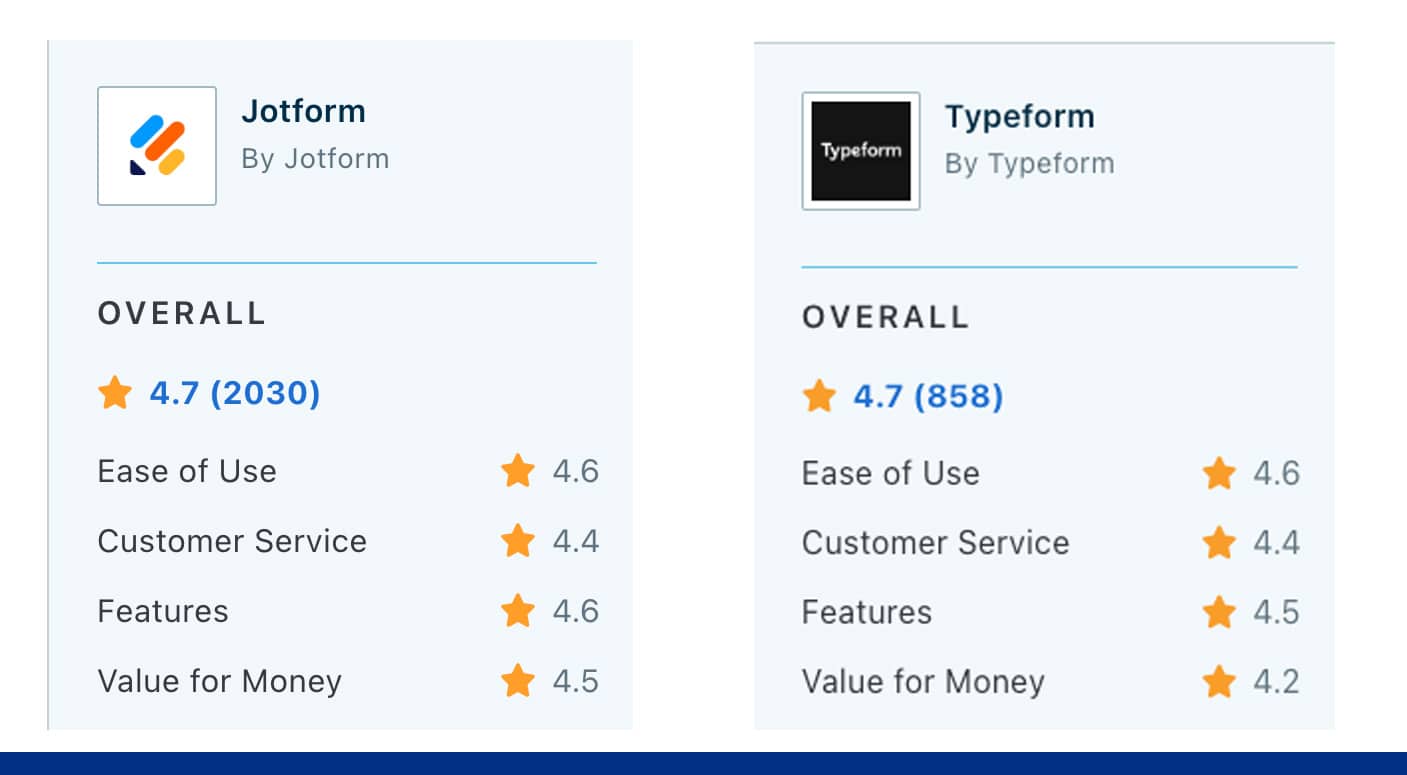
Creating forms may seem like a simple task, and it is, especially if you use the right tool. To help you with this, we’ve decided to compare two of the best tools in the field of form creation: Jotform vs Typeform.
Both companies have developed powerful tools to assist you in creating your forms, whether for data collection or obtaining registrations. In this comparison, we have analyzed their main differences so you can determine which one best suits your needs and from which tool you could get the most benefit.
About JotForm
JotForm is an online form builder that allows users to create customized forms and surveys easily. It has become a favorite for its drag-and-drop interface and its numerous templates and resources.
About Typeform
Typeform is an online tool for creating engaging, interactive surveys and forms. It emphasizes user experience with visually appealing conversational interfaces and offers various customization options to enhance response rates and data collection.
JotForm vs Typeform: Which is the Best Form Builder Platform?
Answering that question is not easy and can be quite subjective. Both platforms have features that can facilitate form creation. However, there are significant differences in specific aspects worth highlighting. Here are some of these differences to remember when deciding which tool will be an important part of your daily routine.
Here’s a detailed comparison of Typeform vs. JotForm to help you decide which tool best suits your needs:
Pricing
Regarding price, both platforms offer similar plans with a fairly similar price/quality balance.
- Typeform: The free plan allows only 10 responses per form. Paid plans start at $29/month and offer unlimited forms and fields with fewer caps overall, making it more economical for teams.
- JotForm: Offers a generous free plan with up to 100 monthly submissions. Paid plans start at $39/month, with a more complex pricing structure that includes caps on form views and the number of fields per form.

Branding
Both platforms are positioned above other competitors, such as Google Forms regarding customization. However, Typeform usually has more attractive modes than Jotform, although if you have advanced knowledge of CSS, you may be able to match the result.
One of the strongest points of JotForm over other platforms is undoubtedly the possibility of removing all branding from the brand and using it in white-label mode.
- Typeform: Provides some customization options, including logos and colors, but retains more prominent Typeform branding throughout the form experience. It does not support full white labeling.
- JotForm: Allows extensive branding customization, including custom logos, colors, fonts, and even CSS customization. It supports white labeling, enabling users to remove JotForm branding entirely.
If you are interested in learning more about this aspect, we recommend reading our guide to: Survey Design.
Ease of Use
Typeform has a fairly intuitive and attractive interface, and its onboarding is super intuitive. However, there is no big difference between the options available in JotForm, although in passing, it is safe to say that Typeform could be easier to use for first-time users.
- Typeform: Known for its visually appealing, conversational interface. It offers a smooth and engaging experience for both the form creator and the respondent. The AI-powered design tool simplifies form creation, making it less tedious.
- JotForm: Features an intuitive drag-and-drop interface that’s straightforward and easy to use, though slightly less streamlined compared to Typeform. It’s suitable for creating a wide variety of forms quickly.
Customization and Features
In any visual aspect, we can say that Typeform stands out from its competitors, but in this comparison, we can assure you that JotForm is not far behind thanks to its flexibility of customization and functions that can emulate the proposal managed by Typeform.
- Typeform: Offers extensive customization options, including fonts, color schemes, and rich media integration (images, videos, and GIFs). It focuses on creating aesthetically pleasing and interactive forms with a one-question-at-a-time approach. Typeform also includes AI features for question suggestions and form personalization.
- JotForm: Provides a high degree of flexibility with customizable templates, advanced form fields (such as signature capture and appointment scheduling), and the ability to add custom CSS. It supports conditional logic, file uploads, and payment processing, making it versatile for various applications.
Data Analysis and Reporting
- Typeform: Offers basic analytics, summarizing survey results with visualizations like completion rates and response times. It lacks advanced data analysis tools but integrates well with external analytics tools.
- JotForm: Provides detailed analytics and reporting features, including response rates, completion times, and user engagement metrics. It also supports integration with Google Analytics and other tools for in-depth analysis.
Integration
- Typeform: Integrates with over 100 applications, including popular CRM systems, email marketing tools, and payment processors like Stripe and PayPal. It also connects with productivity tools like Slack and Trello.
- JotForm: Boasts over 400 integrations, including comprehensive CRM and product management tools. It supports many payment gateways and facilitates seamless workflows through integrations with services like PayPal, Stripe, Google Drive, and Dropbox.
Security and Compliance
In terms of security, it seems that JotForm has strengthened this aspect more, offering interesting features to comply with the strictest regulations.
- Typeform: Ensures data security with standard measures like SSL encryption. However, its compliance options are more limited compared to JotForm.
- JotForm: Prioritizes security with features like HIPAA compliance, SSL encryption, and adherence to GDPR regulations. It provides robust security measures to safeguard sensitive information collected through forms.
User Reviews
On user review platforms, both platforms tend to maintain a fairly similar average, however the popular one tends to lean in favor of jotform. It is also highlighted that users perceive JotForm as a more robust platform and they get more for their money.

JotForm vs Google Forms: Which Should You Choose?
Now that you know the key differences and strengths of both platforms, it should be easy for you to make the right decision based on your project needs. However, if you need a hint, we recommend:
- Choose Google Forms if: You need a free, easy-to-use tool for basic data collection, surveys, and quizzes that is seamlessly integrated into the Google ecosystem.
- Choose JotForm if: You require more advanced features, extensive customization, and robust integration options for complex form-building tasks.
If you’re still not entirely convinced, don’t worry—there are more options available on the market. For obvious reasons, we recommend exploring QuestionPro, one of the best tools for creating forms.
QuestionPro is much more than a traditional form builder. It is a comprehensive ecosystem where you can find the perfect tool for various projects. For instance, if you want to conduct polls, you can use our LivePolls tool for quizzes online at no cost!
Our survey platform allows you to create forms in seconds! You can choose from our extensive question library and survey templates to build a robust form that provides the necessary information. We even have tools like our AI Question Generator to assemble your questionnaire in seconds!
In addition, you can access our advanced features with data analysis methodologies that you might never have imagined. But rather than just reading about it, why not experience it for yourself? Talk to one of our agents right now, and you can enjoy a free 15-day trial with all our features unlocked. Contact us today!







